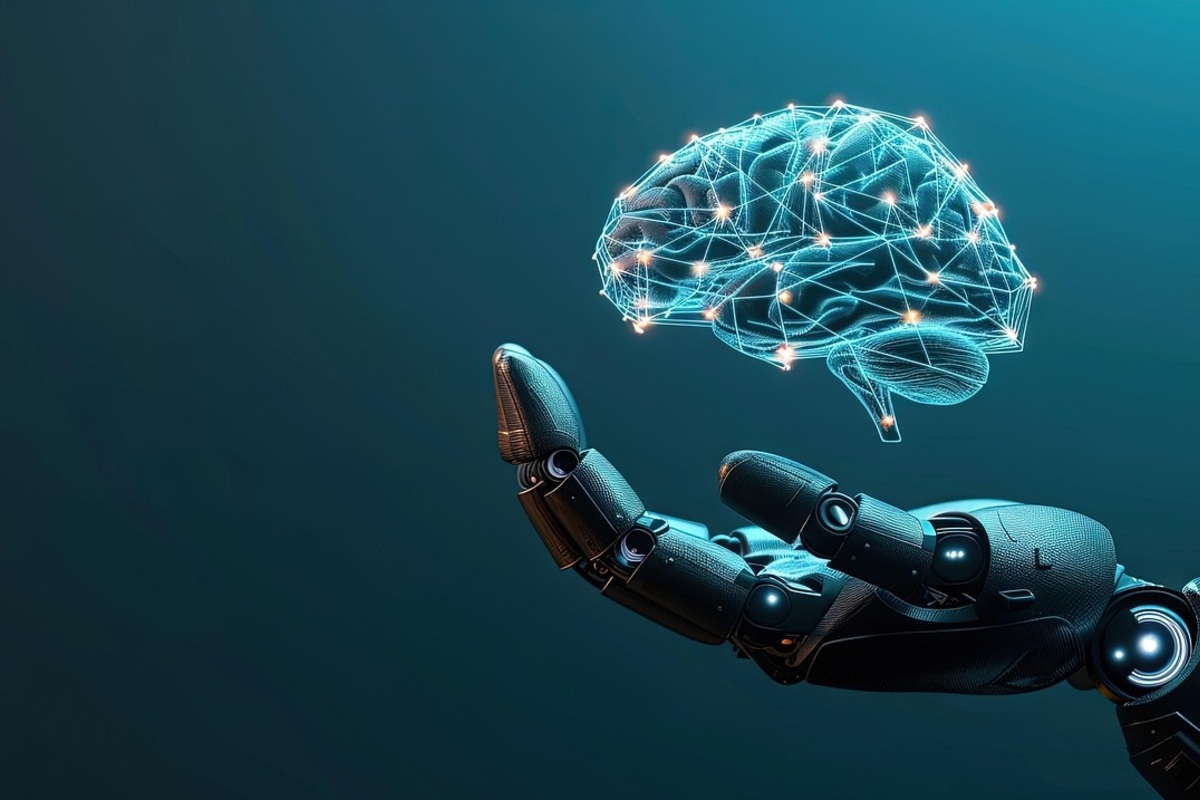ALL you need to know about Retrieval Augmented Generation(RAG)
What is Retrieval Augmented Generation?
Retrieval Augmented Generation (RAG) in generative AI combines language models with retrieval mechanisms. It enhances text generation by allowing AI to access and incorporate relevant information from vast datasets, ensuring output that is both accurate and contextually grounded. Unlike traditional models that generate text based solely on learned patterns, RAG can provide more coherent and informative results. This approach not only improves the quality of generated content but also expands AI’s capability to produce contextually aware responses and creative outputs across various applications, from chatbots and content creation to research and personalized recommendations.
Rag components
1. Query Encoder
In Retrieval Augmented Generation (RAG) within generative AI, the query encoder plays a crucial role by transforming user queries into a numerical representation. This representation enables efficient matching against a vast database of knowledge. By encoding queries, AI systems can retrieve relevant information to augment their generative capabilities. The query encoder ensures that generated responses are contextually accurate and informed by real-world data, enhancing the overall quality and relevance of AI-generated outputs. This mechanism empowers AI to deliver more precise and useful responses across various applications, from natural language understanding tasks to content creation and personalized recommendations.
2. Retriever
Retrieval Augmented Generation (RAG) incorporates a retriever component crucial for enhancing the accuracy and relevance of generated content. The retriever acts as a bridge between user queries and vast repositories of information, efficiently fetching contextually relevant data. Unlike traditional AI models that rely solely on learned patterns, RAG leverages the retriever to ground generated outputs in factual knowledge. This approach ensures that AI-generated responses are not only fluent but also informed by real-world data, making them more reliable and contextually appropriate. By integrating retrieval mechanisms, RAG enables AI systems to excel in various applications, from enhancing chatbot interactions to improving content creation and providing personalized recommendations, thereby advancing the capabilities and utility of generative AI in understanding and responding to human needs more effectively.
3. Generator
In Retrieval Augmented Generation (RAG) within generative AI, the generator plays a pivotal role in creating output based on retrieved information. Unlike traditional generative models, which generate text based solely on learned patterns, the generator in RAG incorporates retrieved data to produce more contextually relevant and accurate responses. It utilizes advanced language modeling techniques to synthesize text that is fluent, coherent, and enriched with factual knowledge obtained from the retriever component. This integration allows AI systems to generate content that is not only linguistically sound but also grounded in real-world context, enhancing the quality and relevance of generated outputs across various applications. By leveraging both retrieval and generation capabilities, RAG represents a significant advancement in AI technology, empowering systems to better understand and respond to user queries and tasks with increased accuracy and contextual understanding.
Types of RAG
1. Token-based Retrieval Augmented Generation
Token-based Retrieval Augmented Generation (RAG) in generative AI combines advanced language modeling with efficient retrieval techniques to enhance content generation. In this approach, queries from users are encoded into tokens, which are numerical representations used to retrieve relevant information from large datasets or knowledge bases. This retrieval process ensures that the generated content is not only fluent and coherent but also grounded in factual accuracy and context. By integrating token-based retrieval mechanisms, AI systems can produce more informed and contextually relevant outputs across various applications such as chatbots, content creation, and personalized recommendations. This methodology enables AI to understand user queries more effectively and generate responses that are tailored to specific needs, thereby improving the overall utility and accuracy of AI-generated content in real-world scenarios.
2. Sequence-based Retrieval Augmented Generation
Sequence-based Retrieval Augmented Generation (RAG) in generative AI utilizes sequence modeling techniques to enhance content generation by integrating retrieval mechanisms. In this approach, user queries are processed as sequences of tokens, allowing AI systems to retrieve relevant information from extensive datasets or knowledge bases. Unlike traditional generative models, which rely solely on learned patterns, sequence-based RAG incorporates retrieved data to generate responses that are not only linguistically coherent but also grounded in factual accuracy and context. This methodology improves the relevance and reliability of AI-generated outputs across various applications, including chatbots, content creation, and personalized recommendations. By leveraging sequence-based retrieval, AI systems can better understand and respond to user queries, providing more informed and contextually appropriate interactions that enhance user experience and utility in diverse real-world scenarios.
Difference between Token-based RAG and Sequence-based RAG
Token-based Retrieval Augmented Generation (RAG) and Sequence-based Retrieval Augmented Generation (RAG) are two approaches within generative AI that integrate retrieval mechanisms to enhance content generation. Here are the key differences between them:
- Representation of Queries:
Token-based RAG: Encodes user queries into tokens, which are numerical representations used for retrieval purposes. Each token represents a discrete unit of information within the query.
Sequence-based RAG: Processes user queries as sequences of tokens. It considers the order and arrangement of tokens in the query to capture contextual relationships between words or phrases.
2. Retrieval Mechanism:
Token-based RAG: Retrieves relevant information based on individual tokens within the query. It matches tokens to entries in a knowledge base or dataset.
Sequence-based RAG: Retrieves information by considering the entire sequence of tokens in the query. It evaluates the sequence as a whole to find the most contextually relevant data.
3. Contextual Understanding:
Token-based RAG: Focuses on retrieving information based on individual tokens, which may lack contextual nuances compared to sequence-based approaches.
Sequence-based RAG: Captures richer contextual understanding by analyzing the sequence of tokens in the query, allowing for more nuanced and contextually appropriate responses.
4. Application and Use Cases:
Token-based RAG: Effective for tasks where discrete pieces of information are sufficient, such as retrieving specific facts or answers.
Sequence-based RAG: Ideal for tasks requiring deeper contextual understanding and nuanced responses, such as generating detailed explanations or responses in natural language.
Optimizing Retrieval Augmented Generation
Optimizing Retrieval Augmented Generation (RAG) in generative AI involves several key strategies to enhance performance and effectiveness. Here are some approaches to optimize RAG:
Efficient Retrieval Mechanisms:
Use optimized algorithms and indexing techniques to speed up the retrieval of relevant information from knowledge bases or datasets. This includes leveraging efficient data structures and caching mechanisms to reduce latency.
Scalable Architecture:
Design RAG systems that can scale with increasing data volumes and user queries. Implement distributed computing frameworks or cloud-based solutions to handle large-scale data retrieval and processing efficiently.
Fine-tuning Models:
Fine-tune both the retrieval model (used to fetch relevant data) and the generation model (used to produce responses) to improve accuracy and relevance. This involves training on domain-specific data and adjusting hyperparameters for optimal performance.
Contextual Understanding:
Enhance the system’s ability to understand and utilize contextual information from user queries. This may involve integrating advanced natural language processing (NLP) techniques, such as entity recognition and sentiment analysis, into the retrieval and generation processes.
Feedback Mechanisms:
Implement feedback loops to continuously improve the RAG system. Incorporate user interactions and feedback to refine retrieval strategies and improve the quality of generated outputs over time.
Evaluation Metrics:
Define and measure appropriate metrics to evaluate the performance of the RAG system. This includes metrics for retrieval accuracy, generation fluency, relevance of responses, and user satisfaction.
Hardware Optimization:
Optimize hardware resources, such as using GPUs or TPUs for computational-intensive tasks like retrieval and generation, to accelerate processing speed and improve overall system efficiency.
Regular Updates and Maintenance:
Keep the RAG system updated with the latest advancements in AI and NLP research. Regular maintenance ensures that the system continues to perform optimally and adapts to evolving user needs and data sources.
By implementing these optimization strategies, developers can significantly enhance the capabilities and performance of Retrieval Augmented Generation systems in generative AI, making them more effective in generating contextually relevant and high-quality outputs.
How to prepare Retrieval Augmented Generation systems in generative AI from scratch
Preparing a Retrieval Augmented Generation (RAG) system in generative AI involves several key steps. Here’s a structured approach from scratch to implementation:
Define Requirements and Scope:
Identify the specific application or use case for the RAG system (e.g., chatbots, content creation, personalized recommendations).
Define the requirements such as data sources, types of queries, expected performance metrics, and integration with existing systems.
Data Collection and Preparation:
Gather relevant datasets or knowledge bases that the RAG system will use for retrieval and generation.
Clean and preprocess the data to ensure consistency, remove noise, and format it for efficient retrieval and processing.
Implement Retrieval Mechanism:
Choose and implement a retrieval mechanism suited to your application, such as TF-IDF, BM25, or neural network-based approaches like dense retrieval models. Integrate the retrieval mechanism with the chosen data sources and optimize for efficient querying and response retrieval.
Develop Generation Model:
Select a generative model framework such as OpenAI’s GPT (Generative Pre-trained Transformer) or BERT (Bidirectional Encoder Representations from Transformers).Fine-tune the generative model on your specific dataset or domain to improve its ability to generate contextually relevant and coherent responses.
Integrate Retrieval and Generation:
Combine the retrieval mechanism with the generative model into a unified RAG architecture.
Develop workflows or pipelines to pass user queries through the retrieval system to fetch relevant information and then feed it into the generative model for response generation.
Optimization and Testing:
Optimize the combined RAG system for performance metrics such as response time, accuracy of retrieval, fluency of generated responses, and user satisfaction. Conduct extensive testing using simulated queries and real-world scenarios to identify and address any issues or areas for improvement.
Deployment and Monitoring:
Deploy the RAG system in a production environment, ensuring compatibility with infrastructure and scalability requirements.
Implement monitoring tools and metrics to continuously evaluate system performance, detect anomalies, and gather feedback for further optimization.
Maintenance and Updates:
Regularly maintain and update the RAG system with new data, improvements in AI models, and adjustments based on user feedback and evolving requirements. Stay informed about advancements in generative AI and retrieval techniques to incorporate new features and capabilities into the system.
Limitations of RAG
Retrieval Augmented Generation (RAG) systems in generative AI offer significant advantages but also have limitations that should be considered:
Dependency on Data Quality: RAG systems heavily rely on the quality and relevance of data in the retrieval process. Inaccurate or incomplete data can lead to misleading or irrelevant generated outputs.
Limited Novelty: Since RAG systems generate responses based on existing knowledge retrieved from datasets, they may struggle to produce truly novel or creative content beyond the scope of their training data.
Scalability Issues: Scaling RAG systems to handle large datasets or increasing numbers of concurrent users can be challenging, requiring robust infrastructure and efficient retrieval mechanisms.
Bias and Representation: RAG systems may inherit biases present in the training data, leading to biased or skewed outputs, especially in sensitive topics or underrepresented domains.
Contextual Understanding: While RAG systems improve contextual relevance through retrieval, they may still struggle with nuanced understanding of complex contexts or abstract queries.
Complexity and Maintenance: Integrating and optimizing both the retrieval and generation components of RAG systems requires substantial expertise and ongoing maintenance to ensure optimal performance.
Response Consistency: Depending on the retrieved information and generative model, RAG systems may produce inconsistent responses to similar queries, impacting user experience and reliability.
Privacy and Security: Retrieving and generating responses based on potentially sensitive data can raise privacy concerns if not handled securely, requiring robust data handling practices.
Summary
Retrieval Augmented Generation (RAG) systems in generative AI represent a powerful integration of retrieval-based and generative approaches to content creation. These systems enhance the accuracy and relevance of generated outputs by retrieving contextually relevant information from large datasets or knowledge bases before generating responses. By grounding generated content in real-world data, RAG improves coherence and informativeness across various applications such as chatbots, content creation, and personalized recommendations.
RAG systems leverage advanced language models to synthesize responses that are not only fluent but also contextually aware, addressing specific user queries more accurately. This approach significantly enhances user interaction experiences by providing more informed and relevant responses compared to traditional generative models alone.
As research progresses, optimizing RAG systems for scalability, minimizing biases, improving data handling practices, and enhancing privacy and security measures remain ongoing priorities to maximize their potential in diverse real-world scenarios.








